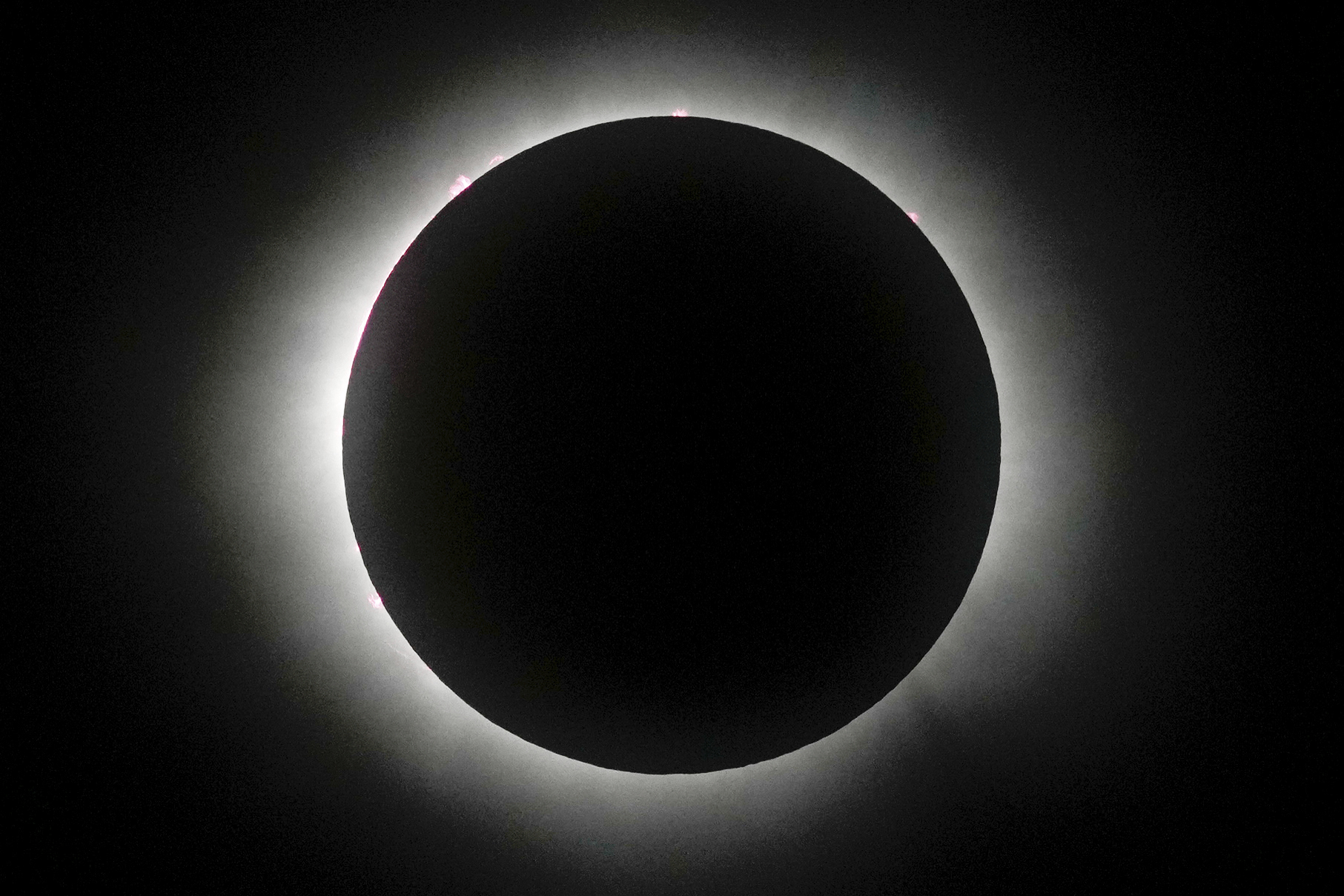Clouds blanketed most of Texas as the total solar eclipse began its diagonal dash across land, starting along Mexico’s mostly clear Pacific coast and aiming for Texas and 14 other U.S. States, before exiting into the North Atlantic near Newfoundland.
Just east of Dallas, the hundreds gathered at Mesquite’s downtown area cheered and whistled as the clouds parted in the final minutes before totality. As the sun finally became cloaked, the crowd grew louder, whipping off their eclipse glasses to soak in the unforgettable view of the sun’s corona, or spiky outer atmosphere, and Venus shining brilliantly off to the right.
City officials reminded everyone that the last total solar eclipse in these parts was the 1870s, making this one all the more special. Eclipse-themed music was turned off as the big moment approached.
“Oh God, it’s so dark,” marveled Aiyana Brown, 14, who watched alongside her grandfather, Mesquite Mayor Daniel Aleman Jr. “I’m a huge science nerd, and this is amazing.”
The weather also cooperated at the last minute near Austin. “I will never unsee this,” said Ahmed Husseim of Austin, who had the eclipse on his calendar for a year. Husseim and his family were among hundreds who gathered on the lawn of Southwestern University in Georgetown, Texas, with blankets, lawn chairs and country music.
Arkansas and northeast New England were the best bets in the U.S., going into Monday’s spectacle. New Brunswick and Newfoundland in Canada also looked promising.
The show got underway in the Pacific before noon EDT. As the darkness of totality reached the Mexican resort city of Mazatlán, the faces of spectators were illuminated only by the screens of their cellphones.
The cliff-hanging uncertainty added to the drama. But the overcast skies in Mesquite near Dallas didn’t rattle Erin Froneberger, who was in town for business and brought along her eclipse glasses.
“We are always just rushing, rushing, rushing,” she said. “But…
Read the full article here

Leave a Reply